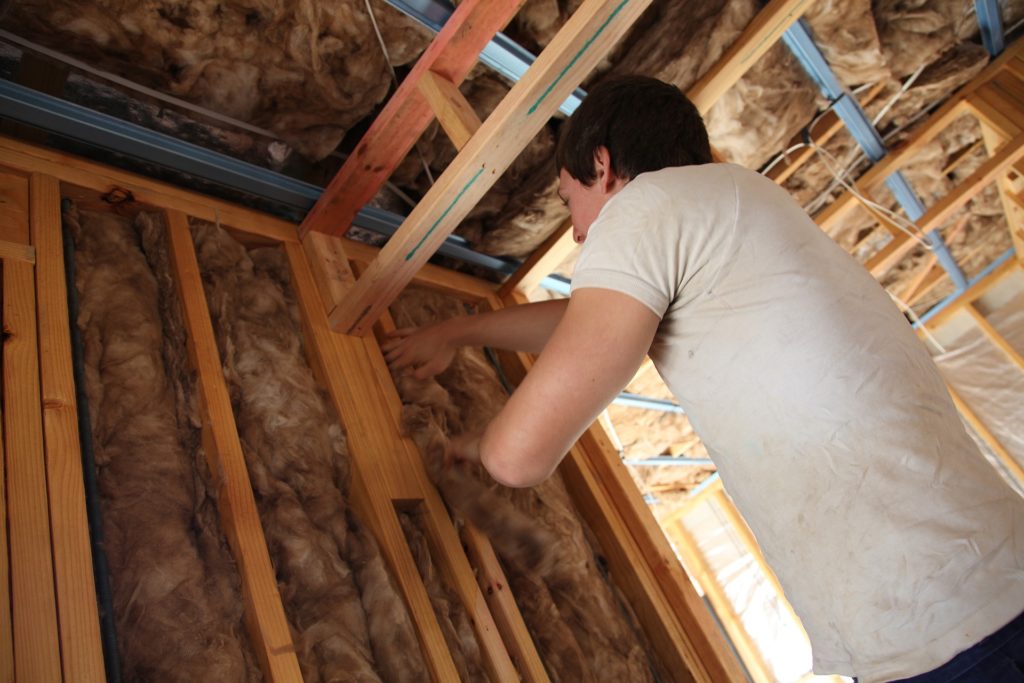By Upgrading Your Attic Insulation
Upgrading your attic insulation can dramatically reduce your heating and air conditioning costs, improve the value of your home, and add to your day-to-day comfort. While this project may cost you $200 or more, once it’s in place it will allow you to save money on your energy bills for the life of your home. And more good news is that your insulation material may qualify you for a federal tax credit.
In Virginia’s climate, attics should be insulated to at least the “R38” level, however most houses have less than they need. With either fiberglass batts or a layer of loose fill cellulose, there should be at least 12 inches of insulation. A good rule of thumb is that you should be able to see only the top of the attic joists if you have fiberglass, and not see them at all if you have cellulose.
Adding loose cellulose insulation is easy and it will fill in any gaps you have in the existing insulation. Machines to “blow it in” to your attic are available at many home improvement centers, and are often free to rent with a minimum purchase. And it’s an environmentally-friendly choice since cellulose is made up of ground-up newsprint.
Materials for the Job:
- Loose fill cellulose insulation (1 bag per 50 square feet of attic, blower rental often free with 10 bag purchase)
Video
Watch this video, created by PEC in 2009, for step-by-step instructions on insulating your attic:
What is R-value?
R-value is a measure of the ability of a material to resist heat flow. The higher the R-value, the greater the insulating value. Depending on the material, insulation has an R-value of 3 to 4 per inch. That means that full and uniform coverage is critical. If you use “R-38” for example, but the insulation does not cover the attic joists or has small gaps or holes (equivalent to 3%), it would actually lose nearly half its value–and function just as R-20 insulation. For more information on R-values, visit the US Department of Energy “Energy Star” website.

Additional Resources:
American Council for an Energy-Efficient Economy: More Information on Insulation
U.S. Department of Energy: Do-It-Yourself Guide to Sealing and Insulating
